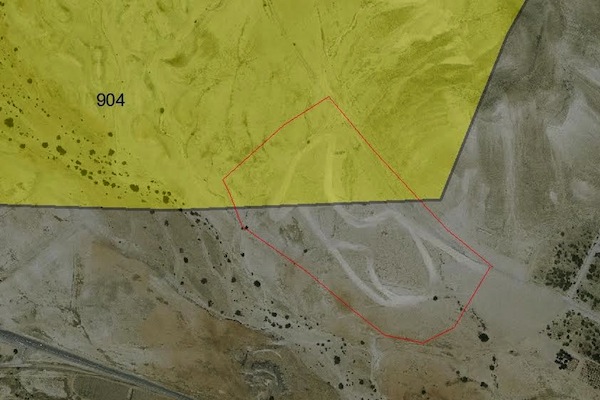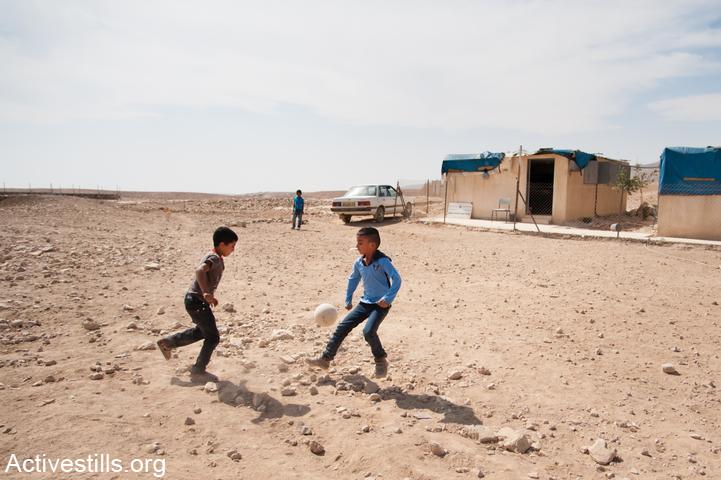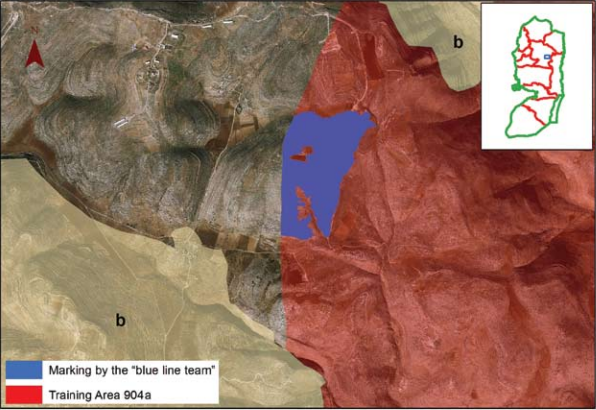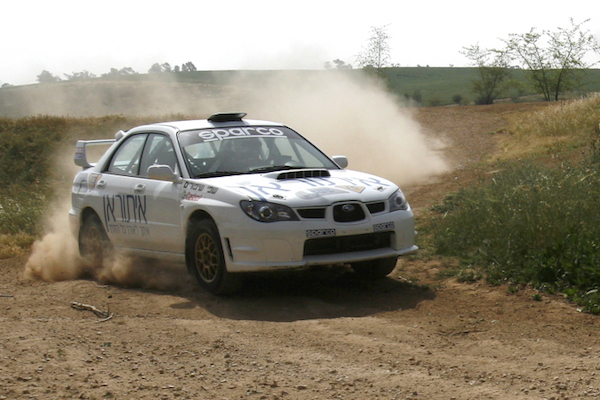The Israeli army says it ordered work stopped on the RallyCross track, but settler officials are singing a different — and defiant — tune. Several Palestinian communities in the same firing zone have been displaced by the military in recent years.
Israeli authorities have been laying the groundwork for a state-of-the-art RallyCross race track, in what they say is a response to the growing demand for motor sport recreational facilities and areas. The only problem? The track being built is partially inside an IDF live firing zone in the occupied West Bank — a designation Israeli military authorities often use to displace local Palestinian populations.
The RallyCross (timed, largely off-road automobile racing) track is being constructed just north of the settlement Petza’el in the Jordan Valley area of the West Bank, on a large tract of land near Wadi al-Ahmar and Route 505. According to Micky Yohai, a veteran Israeli racer who is behind the project, the 1.2 kilometer long track was supposed to be ready by May 2016. Ultimately, the track is supposed to include a motocross track, a drag strip, and a 3.2 kilometer paved track.
In an interview with Ynet last year [Hebrew], Yohai said the project would begin with a dirt track — the first sign of success of a two-year process with the Jordan Valley Regional Council, headed by David Alhayani, who “is strongly pushing the issue.”
Although Israel rules the West Bank under military law due to its status as occupied territory, Israeli settlers have nevertheless established limited civilian local government institutions, nearly identical to those inside Israel proper, although they are ultimately subordinate to the military government.
Alhayani declined to answer +972 Magazine’s questions on the matter, although last year he told Ynet that the track would provide athletes with the ideal place to race, making no mention of the fact that it would run through an IDF training zone.
“When I say there will be a track in the Jordan Valley, there will be a track in the Jordan Valley,” he continued. “We are going full power on this project … We must not forget that we have an advantage, since we fully cooperate with the police and the army.”

The Israeli army’s Civil Administration, which serves as the military government in the West Bank, told +972 Magazine that it had issued stop-work against the track, and acknowledged that the facility was being built illegally. The decision whether to demolish it or not “will be carried out in accordance with political directives and the necessary legal approval,” the Civil Administration said.
Civilian settler authorities from the Jordan Valley Regional Council sang a different tune. Haggai Yehuda, head of the Council’s Municipal Services Division, which according to its website manages sports and recreational facilities in area settlements, told +972 Magazine this week that contractors would be coming to survey the area in a few weeks’ time. Asked about the legal issues facing the track, including its location inside a military live-fire zone, Yehuda sounded undeterred: “Don’t worry. We’re going to get all the permits.”
When +972 Magazine visited the site last week, the area was fenced off, with large mounds of dirt and stacks of metal located on site, including what appears to the metal bars that will form the overhead to mark the starting point.
According to aerial photographs provided by Dror Etkes, an Israeli researcher who closely tracks settlement expansion in the West Bank, almost half of the track is located in the IDF’s “Firing Zone 904.”

Since 1967, the areas declared closed in the West Bank span almost 420,000 acres — almost one third of the total area of the West Bank, and more than one half of Area C, which is under full IDF control. Nearly 247,000 acres of these areas have been closed for training purposes or for the establishment of military bases.
Approximately 6,200 Palestinians in 38 communities live in live fire areas, the vast majority of which make a living from livestock and agriculture. Most of these communities have existed long before Israel occupied the West Bank in 1967. Over the years, IDF firing zones have become a tool used by both Israeli authorities and settlers to displace Palestinians.
Also located inside Firing Zone 904a, along with the future Israeli race track, is the Palestinian village Khirbet Tana, which the army demolished a handful of times last year. “It’s hard to see how demolitions like the ones in Khirbet Tana are about anything other than pushing vulnerable Palestinians out of certain parts of the West Bank,” UN Coordinator for Humanitarian and Development Activities for the occupied Palestinian territory Robert Piper said during a visit to the village in March of last year.
In January of 2017, the Israeli army demolished tents in another shepherding community in Firing Zone 904, Khirbet ‘Ein Karzaliyah, leaving 13 people including six minors homeless, according to B’Tselem. “The forces also destroyed two livestock pens and razed part of the access road leading to the isolated community,” the Israeli human rights organization noted in an online publication.
The most prominent example of the military using training zones to dispossess Palestinians in recent yeares is Firing Zone 918 in the south Hebron Hills, where over 1,300 Palestinian civilians live under constant threat of eviction. There the army simply declared a 30-square-mile area a closed military zone, and has for decades tried to expel the 12 rural communities from an area they have called home for decades. Dozens of Israeli and international authors and public figures have lent their names to the campaign to save Palestinian communities in Firing Zone 918.

In May 2014, Col. Einav Shalev of the IDF’s Central Command – the Israeli army command responsible for the West Bank – confirmed to a Knesset committee that the army had been increasingly been using live fire zones, and conducting training in the Jordan Valley and other areas of the West Bank, as a means of decreasing the number of Palestinian residents living there. Einav argued before the committee that the desire to fight against illegal (Palestinian) construction is one of the main reasons the IDF had been increasing its training in the West Bank:
I think that one of the positive processes that can slip through our fingers is the return of firing zones to a places they are supposed to be yet are not there. This is one of the main reasons that the military establishment conducts many trainings in the Jordan Valley. That is, anyone who looks at the last division training with fighter jets, helicopters and tanks that used artillery, etc… We are now introducing an additional division training in this area…in places where we significantly reduced the amount of training, weeds have grown. This is something that should be taken into consideration.
Using military training zones to dispossess Palestinians is not the work of the army alone. Settlers, too, take advantage of these areas in order to expand the areas of the settlements. (Read Kerem Navot’s report on how closed military zones are used to expand Israeli civilian territory in the West Bank). For example, take the outpost of Gidonim, an outgrowth of the Itamar settlement, which was built in Firing Zone 904a in 2000, almost 20 years after the land in question was declared “state land” in 1983.



